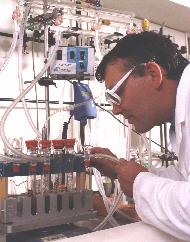Companies spun out from British universities are now more effective than their Stateside counterparts, according to Ederyn Williams, Director of Warwick Ventures at the University of Warwick. Speaking at a Royal Academy of Engineering conference on 29th April, Williams said how UK research is good value. The science research base is about £3 billion and British universities created almost 200 spin-off companies in the year 2000. He compared this with the £20 billion a year spent on research in the USA and the 368 spin-offs formed there in the same year.
Williams added that despite almost seven times the funding some 10,802 invention disclosures were made compared with 2,500 by UK universities. Unfortunately, results that look superficially positive are underpinned by the much lower salaries of researchers in the UK compared with the US, says Williams. He believes more research is therefore done for the money whereas American universities seem to be much more aggressive in their patenting and licensing of inventions to the detriment of company formation and contributing directly to the economy.

Ederyn Williams
One driving force behind the sudden surge British UK university business is, Williams claims, down to the University Challenge seed funds established by the Government in 1999. Most of these 15 seedcorn funds only started investing in 2000 but they have already supported over 200 projects and spin-off companies, he explained. Most of the funds have only invested about half their initial cash so there is plenty more to come.
Some British universities are not only creating their own companies, such as Warwick Effect Polymers, Bradford University company Photox, and Newcastle and UCL’s Xcellsyz to exploit intellectual property generated in their research laboratories but two, Warwick and Birmingham Universities, are also heading up the Mercia Spinner project to assist six other West Midlands universities to translate their technology into profit.

Dave Haddleton of Warwick Effect Polymers
In five years, Williams enthuses, so many of the infant companies that have recently been formed will have grown to such a substantial size that even the most hardened sceptic will have to admit that university spin-offs are a major source of national economic growth.

Photox
Spotlight asked Dr Williams whether British universities should be pushing even more to commercialise their intellectual property rights. Yes, absolutely! he told us, There are still many valuable opportunities which are dropping down the ‘black hole’ because of lack of skilled staff or funds to patent and undertake initial assessment and planning tasks.
He adds that so far, we are nowhere near the bottom of the barrel. Ed French of Coventures Ltd has estimated that academic researchers could likely generate two commercially exploitable innovations every three years, which in one sense amounts to two per PhD student. Williams suggests that the science base is currently only about a fifth of the potential stream of inventions.
There is a worry that fundamental science can become marginalized by commercialisation efforts but Williams disagrees, The best university innovations come from basic scientific breakthroughs, not near-market applied research which is better done in industry, he told us. So as far as I am concerned, the more pure science the better, as it will give us a stream of real ‘breakthrough’ innovations which we can then exploit, he added.
Further reading
Ederyn Williams
http://www2.warwick.ac.uk/services/ventures/staff/
Warwick Ventures
http://www2.warwick.ac.uk/services/ventures/
Royal Academy of Engineering
http://www.raeng.org.uk/
Warwick Effect Polymers
http://www.warwickeffectpolymers.co.uk/
Photox
http://www.photox.co.uk/
Suggested searches
Technology transfer
UK science policy